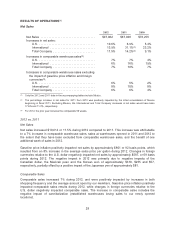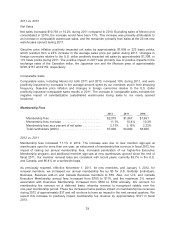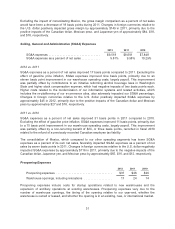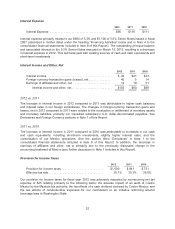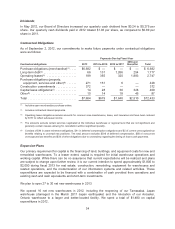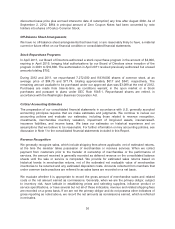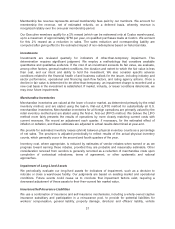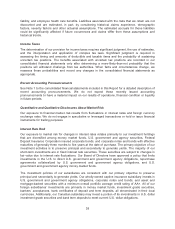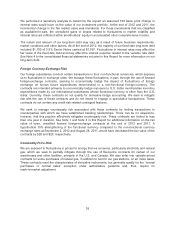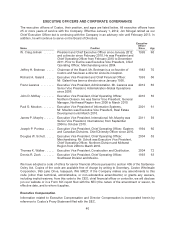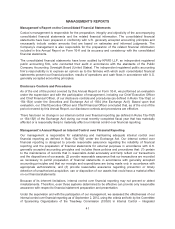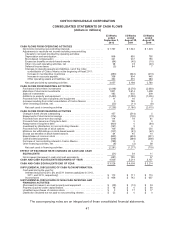Costco 2012 Annual Report Download - page 39
Download and view the complete annual report
Please find page 39 of the 2012 Costco annual report below. You can navigate through the pages in the report by either clicking on the pages listed below, or by using the keyword search tool below to find specific information within the annual report.Membership fee revenue represents annual membership fees paid by our members. We account for
membership fee revenue, net of estimated refunds, on a deferred basis, whereby revenue is
recognized ratably over the one-year membership period.
Our Executive members qualify for a 2% reward (which can be redeemed only at Costco warehouses),
up to a maximum of approximately $750 per year, on qualified purchases made at Costco. We account
for this 2% reward as a reduction in sales. The sales reduction and corresponding liability are
computed after giving effect to the estimated impact of non-redemptions based on historical data.
Investments
Investments are reviewed quarterly for indicators of other-than-temporary impairment. This
determination requires significant judgment. We employ a methodology that considers available
quantitative and qualitative evidence. If the cost of an investment exceeds its fair value, we evaluate,
among other factors, general market conditions, the duration and extent to which the fair value is less
than cost, and our intent and ability to hold the investment. We also consider specific adverse
conditions related to the financial health of and business outlook for the issuer, including industry and
sector performance, operational and financing cash flow factors, and rating agency actions. Once a
decline in fair value is determined to be other-than-temporary, an impairment charge is recorded and a
new cost basis in the investment is established. If market, industry, or issuer conditions deteriorate, we
may incur future impairments.
Merchandise Inventories
Merchandise inventories are valued at the lower of cost or market, as determined primarily by the retail
inventory method, and are stated using the last-in, first-out (LIFO) method for substantially all U.S.
merchandise inventories. Merchandise inventories for all foreign operations are primarily valued by the
retail inventory method and are stated using the first-in, first-out (FIFO) method. We believe the LIFO
method more fairly presents the results of operations by more closely matching current costs with
current revenues. We record an adjustment each quarter, if necessary, for the estimated effect of
inflation or deflation, and these estimates are adjusted to actual results determined at year-end.
We provide for estimated inventory losses (shrink) between physical inventory counts as a percentage
of net sales. The provision is adjusted periodically to reflect results of the actual physical inventory
counts, which generally occur in the second and fourth quarters of the year.
Inventory cost, where appropriate, is reduced by estimates of vendor rebates when earned or as we
progress toward earning those rebates, provided they are probable and reasonably estimable. Other
consideration received from vendors is generally recorded as a reduction of merchandise costs upon
completion of contractual milestones, terms of agreement, or other systematic and rational
approaches.
Impairment of Long-Lived Assets
We periodically evaluate our long-lived assets for indicators of impairment, such as a decision to
relocate or close a warehouse facility. Our judgments are based on existing market and operational
conditions. Future events could cause us to conclude that impairment factors exist, requiring a
downward adjustment of these assets to their then-current fair market value.
Insurance/Self-Insurance Liabilities
We use a combination of insurance and self-insurance mechanisms, including a wholly-owned captive
insurance subsidiary and participation in a reinsurance pool, to provide for potential liabilities for
workers’ compensation, general liability, property damage, directors’ and officers’ liability, vehicle
37



